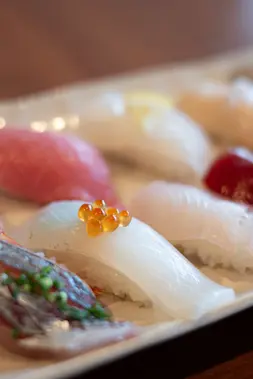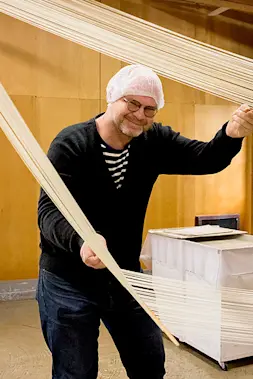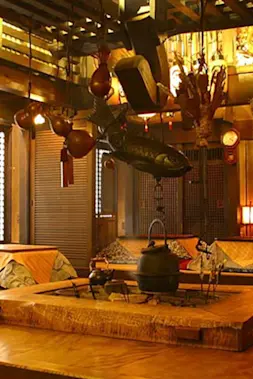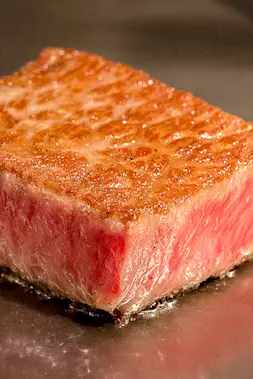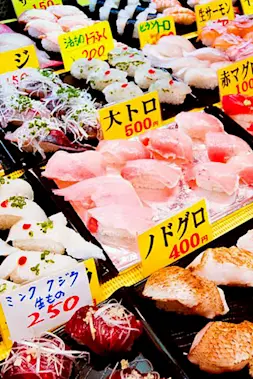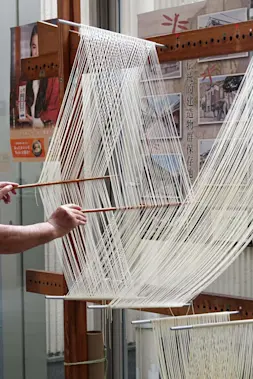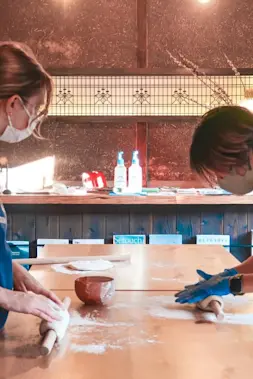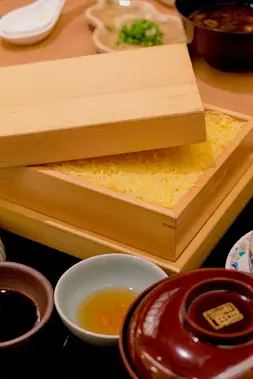Food & Drink
Setouchi Sake Brewery: A Treasure Trove of Delectable Japanese Sake

Why Setouchi’s sake is perfect
Setouchi, the largest inland sea in Japan, is surrounded by Hyogo, Okayama, Hiroshima, Yamaguchi, Tokushima, Kagawa, and Ehime prefectures. The calm sea without waves, the islands that seem to float beyond it, and the large bridge that connects them.
Also, the area also offers many attractions, including Itsukushima Shrine in Hatsukaichi City, Hiroshima Prefecture, Setouchi National Park in Imabari City, Ehime Prefecture, and the The Setouchi Triennale (also known as the Setouchi International Art Festival), an international contemporary art festival held on the islands of the Seto Inland Sea.
The area is famous for sake as well. Japan's three major sake-producing regions are Nada in Hyogo Prefecture, Fushimi in Kyoto Prefecture, and Saijo in Hiroshima Prefecture. Did you know that two of them, Nada and Saijo, are located in the Setouchi area? Nada is also the area that produced Yamada-Nishiki, the king of sake rice. Yamada-Nishiki has large grains with a large well-defined starch core (shinpaku) which can be polished out without breaking. Excellent water absorption into the starch core allows the koji mould to penetrate into the grain easily, which leads to a quality koji and provides rice solubility in the fermentation mash.Together with low amount of protein, Yamada-Nishiki Is ideal for making delicate, fruity ginjo sakes. In the same Setouchi area, in terms of Sake, there is also Asahi Brewery, a proud producer of the sake brand, Dassai which is very famous worldwide.
Why is Setouchi’s sake good to taste? The Setouchi area around the Seto Inland Sea is blessed with a mild climate, and thus has flourished since prehistoric times. In addition to its agricultural resources and abundant seafood, the area has been the cradle of numerous industries and cultures thanks to its active maritime transportation. Along with the culinary culture of the region, sakes in Setouchi have evolved specially to match the variety and freshness of the fish and the uniquely sweet soy sauce. Tasting those delectable sakes is a highlight experience for foodies around the globe. Let us introduce you to some of the hidden sake gems in the Setouchi region.
Nagayama Honke Brewery (Yamaguchi)
Nagayama Honke Brewery, located in Futamatase, Ube City, Yamaguchi Prefecture, was founded in 1888. The undercurrent water of Koto River, which is the brewing water, originates from Akiyoshidai Plateau, a huge limestone terrace formed by coral reefs 250 million years ago. The water that passes through this plateau is rich in calcium, magnesium, potassium, and phosphorus, which provide the sake a distinctive minerality with a pleasant acidity and dryness.
The brewery is known for its brand "Taka", created by the fifth generation master brewer/president Takahiro Nagayama. The brand name "Taka" is named after the master brewer himself.
"Think globally, act locally" is Nagayama's motto. After studying abroad in Vancouver, Canada for two years, Nagayama returned to the brewery and assumed full responsibility for brewing in 2001. Based on his experience visiting many wineries in Europe and the U.S., he believes that "sake needs the same terroir(all natural environments, including weather conditions such as hours of sunlight, temperature, and precipitation) concept as wine.” Following his strong belief of terroir, the entire "Taka" lineup, from standard sake to seasonal sake, is Junmai (pure rice sake). Furthermore, in 2019, the company has launched its own agricultural corporation, taking full responsibility not only for ingredient rice polishing but also for legally required rice grade inspections. In addition, he renovated the brewery main building, which is registered as Tangible Cultural Asset, into a surprisingly chic and modern tasting room with a retail shop, in order to value communication with consumers.
Nagayama is making full use of his fluent English language skills to promote "Taka" overseas. He exports to France, Taiwan, South Korea, Hong Kong, Singapore, Australia, Canada, and many other countries. “I really hope that, in the not-so-distant future, our sake will be drunk more outside Japan along with various foods, not only with Japanese cuisine alone”, envisions Nagayama for the future of his own sake brand. That dream must come true sooner or later.
Imada Shuzo Honten (Hiroshima)
Imada Shuzo Honten is located at Akitsu in Hiroshima Prefecture, a quaint port town overlooking the Seto Inland Sea. Soft water hereat Akitsu made sake brewing difficult for the brewers living in the Edo Period. However, Senzaburo Miura, an Akitsu-born brewing legend, developed an innovative brewing method in the early Meiji Period that let sake yeast slowly generate fruity ginjo (premium sake that uses rice that has been polished to at least 60 percent) aroma at low temperature. Since then, the soft water that had been considered a weakness drastically turned into an asset for the district. Imada Shuzo Honten proudly continues to use the brand name Fukucho named by Senzaburo Miura to this day.
Miho Imada, the brewery's fifth master brewer and the owner of the brewery, is one of the female pioneers in the sake brewing world. After graduating from a university in Tokyo, she became active in the fields of education and culture, and had completely retreated from the family business of sake brewing, which had been in existence for more than 100 years. However, she returned to Akitsu in 1994 to begin her career as a brewer at her family-owned brewery. She has accomplished outstanding achievement, including the revival of once obsolete sake specific rice called “Hattanso” and the creation of new market-driving products such as Fukucho White koji Junmai “Sea Food”. This sake uses white koji(Grains such as rice, wheat, and soybeans are propagated with "koji mold") for its refreshing acidity derived from citric acid, gaining high reputation to pair with seafood, especially oyster, a great speciality in Akitsu district. In November 2020, Imada was selected as one of the "100 Women of the Year," a list announced by the BBC every fall, as the first woman involved in the sake industry.
For over twenty years, Imada Shuzo Honten has been exporting its sake to North America, Asia, and Europe. Exquisite sake with a great story is out for you to enjoy the terroir of Setouchi.
Tsuji Honten Brewery (Okayama)
Tsuji Honten Brewery is located at the historical town of Katsuyama, Maniwa City, Okayama Prefecture. Sake from this region is drier and refreshingly more crisp than most of the sweet, rich, round sake from the Southern Setouchi area. This is the taste sought by the people of this region, where winters tend to be severely cold.
Founded in 1804, the brewery presented their sake to the Miura family, one of the samurai lords at the former Mimasaka Katsuyama Domain. This is where their brand name Gozenshu (meaning "The Official Sake of Katsuyama Domain") originates from.
The brewery is run by Soichiro Tsuji, the seventh-generation president. Soichiro's sister, Maiko Tsuji, is the toji (master brewer), who proudly claims to be the first female toji in Okayama Prefecture. She became the toji after the sudden death of the previous toji in 2007, Since then, she has achieved brilliant results, including six consecutive years of winning the Superior Award in the Junmai sake category at the annual sake competition run by local Regional Taxation Bureau.
Tsuji Honten Brewery is now taking on two major challenges in sake brewing. The first is to brew all its sake using the "Bodai-moto" technique. This is a traditional method of sake brewing which utilizes ambient lactic acid bacteria, being handed down since the Muromachi period (1333-1573). Labor-intensive process as it is, natural, pleasant acidity and lactic taste with intense, complex flavor created by Bodai-moto is rewarding enough for effort. “In 1984, we pioneered the restoration of the ancient "Bodai-moto" method," says Soichiro.
He recommends two sakes from his brewery. The first is Gozenshu 1859. "The year 1859 is when Omachi (Sake rice with a history of over 100 years) sake specific rice was born. This sake is our flagship, which most embodies the company's motto, "The future of Omachi is brewed by Gozenshu." he proudly states.
The other is Gozenshu Bodaimoto Nigori (cloudy) Sake. This cloudy sake was the first step in the re-introduction of Bodai-moto. “The refreshing acidity and the full flavor from the Omachi rice pairs so well with cheese and other dairy products, as well as spicy dishes," he says. Tsuji Honten Brewery keeps on tackling with new challenges, based on a firm foundation of tradition handed down from generation to generation.
Taketsuru Brewery (Hiroshima)
Takehara City has been nicknamed as the "Little Kyoto” of the district, and its townscape preservation area, also designated as National Preservation District for Groups of Traditional Buildings, is deemed to be a symbol of Takehara City. Taketsuru Brewery is located just in the middle of a quaint street here.
The Takehara family started a sake brewery business in 1733. It is also the birthplace of Masataka Taketsuru, the founder of Nikka Whiskey known as the "Father of Japanese Whisky".
Taketsuru Brewery strives to brew sake that makes the most of nature's bounty. First, it should be noted that, starting in 2016, all products are junmai sake, which means that no distilled alcohol is added to the products. The standard in the sake industry is to add high-strength alcohol to extract aroma, but this brewery has stopped that to preserve the original "umami" flavor of sake.
In addition, the company has revived the "kimoto" technique, which relies on ambient lactic acid bacteria to protect the fermentation starter. Kimoto technique is one of the traditional brewing methods during the Edo period (1603-1868). In 2004, Taketsuru Brewery became the first brewery in Hiroshima Prefecture to revive this authentic method. It hasn’t stopped here. While the addition of industrially cultivated yeast has become the norm for modern sake brewing, this brewery does not add cultivated yeast, but instead uses the ambient yeast in the air for fermentation. What is even more intriguing is that since 2009, the company has revived the traditional "wooden vat brewing" method. Brewing in wooden vats is labor-intensive, which requires a great deal of work to maintain hygiene. However, diverse microorganisms surviving on the vat surface provide sake with multi-layered, complex flavor with great intensity.
All those extraordinary efforts give the sake one-of-a-kind character. Taketsuru Brewery's sake is an excellent match for food and can be enjoyed without getting tired of drinking. Although quite far from elegant, fruity ginjo sake which dominates modern sake trends, this sake opens a new door for those who are seeking for natural, umami-driven sake out of traditional endeavors.
A Perfect Sake Pairing Guide by Sake Samurai Natsuki Kikuya
Let's hear what a sake expert has to say. Natsuki Kikuya is Sake Product Development Manager at the Wine and Spirits Education Trust (WSET), the largest and most respected UK-based wine and spirits educational organization of its kind in the world. Kikuya was also awarded with the prestigious title of Sake Samurai in 2015.
“Traditionally, sake pairing with the majority of Western cuisine has been a challenge knowing the amount of fat, seasoning and spices are based on “addition” instead of “subtraction” of flavors in Japanese cuisine. In order to balance the fatty dishes, the pairing drink should have a substantial amount of acidity to ‘cut through’, or tannins in red wine to ‘balance’ the weight of the dishes.” comments Kikuya.
“Having no tannin and much lower acidity in sake than wine, the key to pair sake with Western Cuisine, is to highlight the umami of the dishes by pairing sake with similar amount of umami to harmonize, or to bring out the unique aromas of sake by linking with some herbs, fruits or daily ingredients in dishes.”
In this light, she recommends three pairings.
Fukucho Hattanso Junmai Ginjo x Smoke salmon citrus salad with dill
Herbaceous and citrus flavors in sake made with Hattanso rice accompany the umami from the salmon with delightful dill aroma.
Seishu Taketsuru Kimoto Junmai (55c) x Grilled shiitake mushroom with onion chutney
This will be a wonderful experience for the vegan palate, along with the pleasant lactic flavor of Taketsuru Kimoto in combination with earthy aroma and delectable umami of shiitake mushroom.
Tsuji Honten Bodai-moto Kijoshu x Sautéed veal sweetbread with morel sauce and mashed sweet pea
Kijoshu can be roughly translated as “noble fermentation sake” with a nod to “noble rot wine”, a Japanese sweet sake reminiscent of Tokaji or Sauterne. Gentle sweetness with juicy acidity and firm body derived from Bodai-moto, a traditional fermentation starter, accentuates the rich creaminess and umami of the sweetbread.
Setouchi has scenic beauty, a great climate, a rich food culture, and delicious sake. Why not visit these attractive Setouchi once?
Text: Ayuko Yamaguchi
RELATED DESTINATION
Yamaguchi
Yamaguchi is surrounded by ocean, mountains and rivers and is characterized by its climate, which is comfortable throughout the year. Its natural scenery, which includes some 1,500 kilometers of coastline, is a cut above. The prefecture has Kintaikyo Bridge, one of the three most famous bridges in Japan, and other tourist attractions, and its fugu (pufferfish) is famous as a winter dish.










































